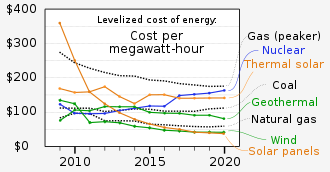Energy capacity frameworks catch energy for a specific period before changing over it back into usable electric power. In any case, that cycle can change generally starting with one best electricity rates in Houston stockpiling project and then onto the next. We should investigate only a couple of sorts of energy stockpiling frameworks.
Battery energy capacity
The main electrical framework was created by Nikola Tesla in the last part of the 1800s and prompted the advancement of the battery stockpiling frameworks that we know today. Presently, lithium-particle batteries are utilized to drive electric vehicles and, surprisingly, whole houses. The high thickness of lithium-particle batteries makes them valuable for ordinary gadgets, yet they’re just able to do brief span stockpiling and should be charged frequently. Vanadium stream batteries that store power in fluid electrolyte tanks might be more appropriate for huge-scope energy capacity projects. Other battery advances incorporate lead-corrosive, sodium-sulfur, and metal-air batteries, all of which could assume a part in the efficient power energy progress.
Motor energy stockpiling
Not all energy stockpiling arrangements require batteries. The Signal Power office in New York utilizes approximately 200 flywheels to control the recurrence of the territorial power framework. By utilizing power to turn flywheels unbelievably quickly, the flywheels can store energy and return it to the power lattice later. This office has a limit of 20 megawatts, making it more reasonable for recurrence guidelines than long-haul power capacity.
Compacted air energy capacity (CAES)
Compacted air can be utilized to store power by being constrained into a chamber at high tension and being utilized to turn a turbine on the exit plan. Since it requires repositories (normally underground), this innovation is just in restricted use all over the planet. Another CAES plant is in progress in Texas, with an extended limit of 317 megawatts.
Nuclear power stockpiling

The capacity of nuclear power involves varieties of temperatures to catch and store electrical energy. The most widely recognized model is concentrated sunlight-based power (CSP), in which sun-oriented energy is centered around an intensity move liquid that can be utilized to drive a generator. The biggest CSP office on the planet is in the Mojave Desert in California and has a limit of 399 megawatts.
Hydroelectric capacity
Water can be utilized to store energy as well. Siphoned capacity hydropower (PSH) is the innovation behind 93% of all huge scope stockpiling frameworks in the U.S., and it could turn into a central participant in worldwide energy stockpiling frameworks. Not at all like conventional hydropower plants, which don’t store energy, PSH siphons water into an upper repository and converts it into power on its way down.
The amount of Energy Stockpiling Do We Want?
How much energy stockpiling we want relies upon where we reside and what our objectives are. Since each power network has an alternate blend of force sources, a few districts of the world might require more capacity limits than others. On a worldwide scale, the Global Energy Affiliation (IEA) works out that we’ll require 266 gigawatts of capacity before 2030 “to keep an Earth-wide temperature boost under 2 degrees Celsius.” Is that reachable? Bloomberg suspects as much: it accepts we’ll arrive at that objective and outperform 942 gigawatts by 2040.
Starting around 2021, the Texas power matrix was fit for producing up to 90,000 megawatts of force, however, just had 460 megawatts of capacity limit. The Electric Dependability Chamber of Texas (ERCOT) expects to increment capacity ability to 3,008 megawatts by 2022. As well as putting away wind and sun-based power and conveying it to the network when it’s required, energy capacity frameworks could be utilized to work gaseous petrol plants during power outages, or as a reinforcement power source in nearby networks.
